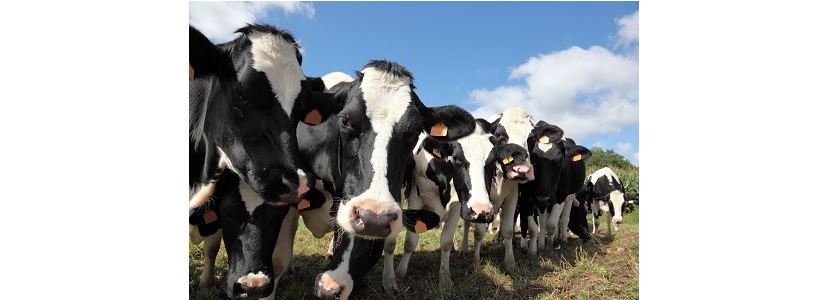Nutritional strategies to decrease the conversion of NEFA into triglycerides that accumulate in the liver of dairy cows
In addition to the nutritional strategies used to decrease the supply of circulating NEFAs available for extraction by the liver, there is the possibility of slowing the rate at which NEFAs are converted into triglycerides in the liver through nutritional additives.
Choline
It is a quasi-vitamin that has a variety of functions in mammalian metabolism. Its most important functions are as:
component of phospholipids located in the membranes of all cells of the body (phosphatidylcholine)
component of the neurotransmitter acetylcholine
as a direct precursor of betaine
The potential application of choline inclusion in transition cows’ nutrition has mainly focused on its role in lipid metabolism. Due to the fact that phosphatidylcholine is necessary for the synthesis and release of VLDL by the liver.
Choline formula
Milk and fat-corrected milk yields have generally increased in response to feeding protected choline in the rumen during the transition period. Suggesting that metabolic changes in hepatic fatty acid metabolism translated into an improved performance during early lactation.
Methionine and Lysine
The two most limiting AAs for milk and milk protein synthesis are often considered (NRC, 2001). [register] These AAs also have potential roles in:
- Mitochondrial β-oxidation of fatty acids in the liver (carnitine biosynthesis)
- And the export of triglycerides such as VLDL (biosynthesis of apolipoprotein B100; Bauchart et al., 1998).
- These positive productive responses do not appear to be directly related to the effects of hepatic lipids or glucose. Therefore, the specific functions of Met and Lys in hepatic lipid and glucose metabolism are still in debate.
Linolenic acid
Linolenic acid is a precursor to docosahexaenoic and eicosapentaenoic acids; together, these fatty acids may have important functions for the secretion of apolipoprotein B100 and also for VLDL particles.
- In vitro incubation of ruminant hepatocytes demonstrated that linolenic acid may have a potential role in decreasing cellular accumulation of triglycerides.
Short-term cultures of cow liver cuts immediately after calving revealed a lower fatty acid esterification capacity when incubated with a mixture of linoleic and linolenic acids (Piepenbrink and Overton, 2003a).
Restricted feeding during the dry period
Despite the widely accepted concept that increased dry matter intake (DMI) during the prepartum period is a an indicator of an increase in dry matter consumption during the postpartum period and of the overall success of cows in transition; several researchers have studied the possibility of restricting energy intake of dairy cows during prepartum in order to adapt metabolism to a negative energy balance.
Cows fed restricted balanced diets below calculated energy requirements (usually about 80% of requirements) did not decrease their voluntary DMI during the days leading up to calving and increased postpartum DMI and milk production as cows who consumed the same ad libitum diets (Douglas et al. , 1998; Holcomb et al. , 2001; Agenas et al. , 2003).
- If looked at together, these results are intriguing. However, all of the mentioned experiments were conducted on cows that were fed individually. It will be difficult to achieve a uniform restricted intake in typical group feeding scenarios found in commercial farms in order to establish greater focus on the dynamics of the prepartum DMI curve (i.e. the rate and degree of decrease in consumption before birth).
Mashekand Grummer (2003) proposed that although postpartum DMI and milk production appeared to have a stronger correlation with total DMI from day 21 prepartum to day 1 prepartum, the change in DMI had a stronger correlation with metabolic rates such as plasma concentrations of postpartum NEFA and accumulation of triglycerides in the liver.
Conclusions
Overall, research supports two-group nutritional management schemes in dry cows for minimizing overfeeding during the early dry period and increasing energy supply during the late prepartum period.
Although more studies are required, recent evidence suggests that transition cows’ metabolism and performance are more sensible to the total energy supplied by carbohydrates than to that carbohydrate’s form (i.e., starch versus highly digestible FDN).
Decreasing the release of NEFA from adipose tissue by feeding additional dietary fat sources or CLA trans-10, cis-12 has not resulted in improved metabolism or consistently improved performance. Despite the existing dogma stating that there is little potential to nutritionally affect hepatic metabolism of NEFAs extracted from circulation, recent evidence suggests that nutrients such as choline and essential fatty acids may increase hepatic export rates of NEFA as triglycerides in VLDL.♦
Source: Overton y Waldron, 2004
[/register]
Continue reading: “Nutritional management of the dairy cow in transition (spanish content)”
